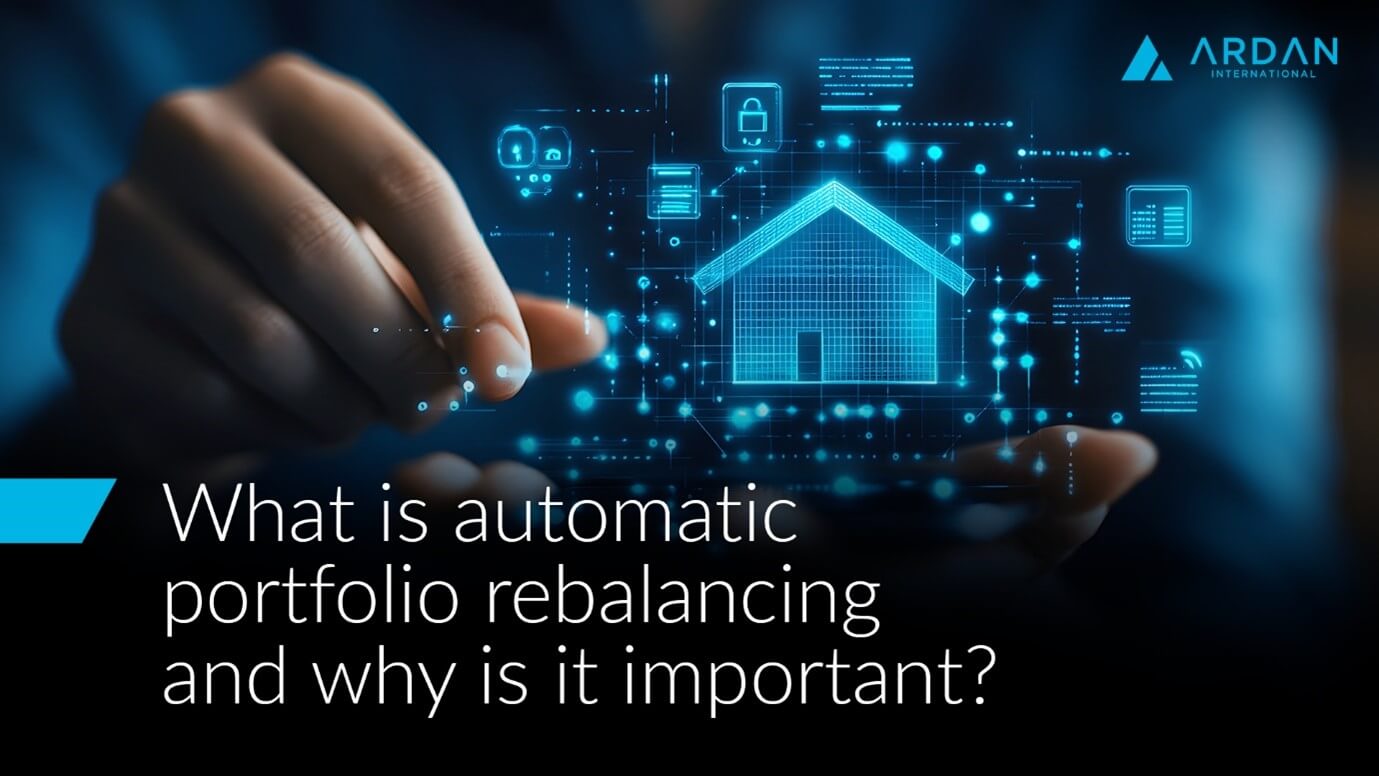29 APR 2025
What is automatic rebalancing?

Automatic rebalancing is when a financial adviser or a wealth management platform rebalances your portfolio without your involvement. It aims to safeguard investors from becoming overly exposed to undesirable risks by allowing them to maintain a desired asset allocation. As investments fluctuate in value, they can deviate from the original asset allocation and become overly concentrated in one or more investments.
Ardan’s automatic rebalancing feature - Every working day at 10am UK Time the system will check all portfolios linked to a Model Portfolio to see if either of the two rebalancing options have occurred, and place trades on the appropriate portfolios. The portfolio manager has the ability to build in two rebalancing options:
• Forced Rebalance: Forced rebalancing or calendar rebalancing is a simple approach that involves assessing the investment holdings at fixed timeframes and adjusting the portfolio back to its originally intended target allocation. This can be done automatically weekly, monthly, quarterly or annually from a chosen date.
• Tolerance: When creating a Model Portfolio the user has the ability to build in a tolerance of between 0%-100%. If any asset within a linked portfolio breaches the tolerance the portfolio will rebalance to bring it back in line with the model.
Why is it important?
Long-term investing can be compared to navigating a transatlantic voyage- rebalancing acts as course correction
Just as sailors adjust their route to counteract currents or storms, investors must periodically realign their portfolio to its target allocation. For example, A 30-year-old investor aiming to retire in three decades might initially allocate their portfolio to 90% stocks and 10% bonds, leveraging their extended time horizon to tolerate higher risk. However, market fluctuations could cause asset drift: after three years, the portfolio might shift to 70% stocks and 30% bonds as bonds outperform equities. In this case, rebalancing would involve selling bonds (which have grown disproportionately) and reinvesting those proceeds into stocks to restore the original 90/10 split. This disciplined approach ensures the portfolio remains aligned with the investor’s risk tolerance and long-term objectives, even as market conditions evolve.
Benefits of auto rebalancing
- No transaction fees – Portfolio rebalancing is included as part of our online service, meaning you won’t incur any extra transaction or management fees when your portfolio is automatically adjusted.
- Tax efficiency - Rebalancing often involves selling assets, which can trigger capital gains tax on any profits made (if investments are not held in ISAs or SIPPs). However, not rebalancing could leave your portfolio overexposed to market downturns in a specific asset class. To make informed decisions, investors should consult their accountant or tax adviser regarding any potential tax implications.
- Removes emotions - When investments are increasing in value, it can be emotionally challenging to make decisions. Setting up automatic rebalancing removes the emotions that could prevent an investor from actively buying or selling their investments.
- Reduces risk- The typical investor is focused on family, work and other daily responsibilities rather than tracking their portfolio on a regular basis. Because their minds are elsewhere, it is possible to miss rebalancing triggers which can add unnecessary risk to their portfolios. Ardan’s automated rebalancing keeps your portfolio aligned with your goals, freeing up your time for what truly matters.
To sum it up, automatic rebalancing is a critical tool for reducing investment risk by maintaining alignment with predefined asset allocations and mitigating unintended exposure to market volatility.